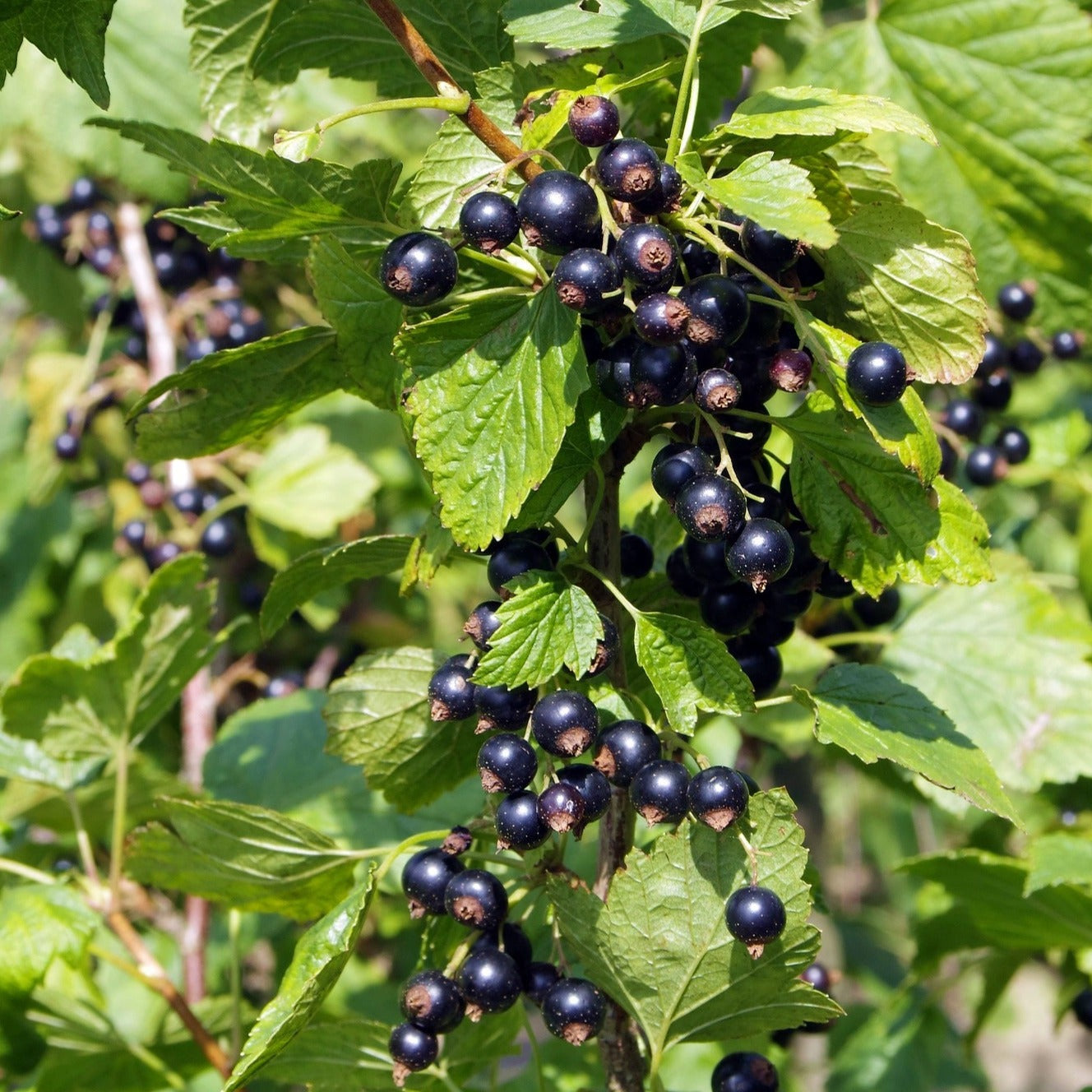The American Fig Company
Crusader Black Currant
Crusader Black Currant
Couldn't load pickup availability
The Crusader Black Currant plant is a deciduous shrub that belongs to the Ribes genus and is native to Europe. It grows up to a height of 4 to 5 feet and has an upright growth habit. The leaves of this plant are lobed and have a rough texture. They are a medium green color and turn yellow in the fall.
The Crusader Black Currant plant produces small, fragrant flowers in the spring that are followed by clusters of dark purple berries in the summer. These berries are known for their tangy and sweet flavor and are a popular ingredient in jams, jellies, and juices.
This plant prefers moist, well-drained soil and partial shade, although it can tolerate full sun in cooler climates. It is also tolerant of cold temperatures and can withstand winter temperatures as low as -30°F.
In addition to its culinary uses, the Crusader Black Currant plant has also been used for its medicinal properties. The berries contain high levels of vitamin C and antioxidants, and have been used to boost the immune system and alleviate symptoms of colds and flu. The leaves and bark of the plant have also been used to treat various ailments, such as arthritis, gout, and sore throats.
Overall, the Crusader Black Currant plant is a versatile and hardy shrub that offers both culinary and medicinal benefits.
Latin Name: Ribes nigrum
Site and Soil: Crusader black currants prefer a full sun to partial shade location and well-draining soil with a pH between 5.5 to 7.0.
Pollination Requirements: Crusader black currants are self-fertile and do not require cross-pollination.
Hardiness: Crusader black currants are hardy in USDA zone 3 to 8 and can tolerate temperatures as low as -40°F.
Bearing Age: Crusader black currants can bear fruit in the second or third year after planting.
Size at Maturity: A mature Crusader black currant plant can reach a height of 4 to 5 feet and spread up to 4 feet wide.
Bloom Time: Crusader black currants bloom in early spring, usually in April, with small clusters of pinkish-white flowers.
Ripening Time: Crusader black currants usually ripen in mid-July to early August, depending on the location and growing conditions.
Yield: A mature Crusader black currant plant can produce 5 to 10 pounds of fruit per season.
Pests & Diseases: Crusader black currants are susceptible to several pests and diseases, including currant aphids, currant fruit flies, and white pine blister rust. Regular pruning, crop rotation, and good garden sanitation can help prevent these problems.
USDA Zone: 3 to 8
Share

Featured Review
"Great! Great! Great! Great! Great!"
✰✰✰✰✰
- JARREN -
